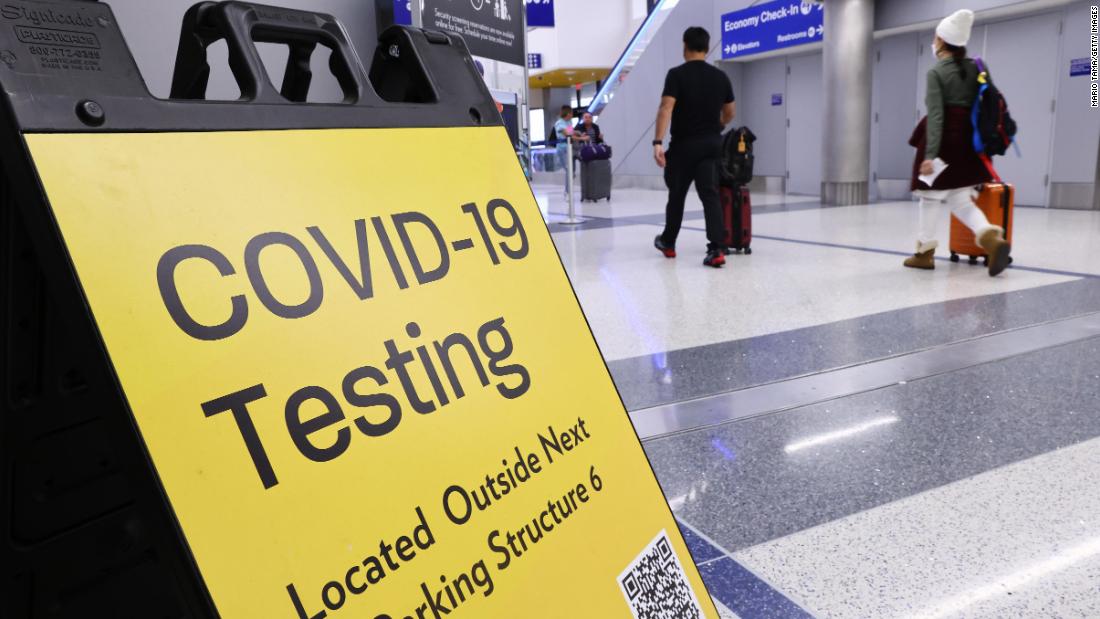Alert in the US for the next "viral storm" of covid-19 0:46
(CNN) -
If you need to know if you have coronavirus but don't want to deal with scheduling appointments and clinic wait times, a self-test may be a convenient solution.
But who are self-assessments suitable for?
And how to use them correctly?
Coronavirus self-tests, also known as home tests or over-the-counter tests, are one of several risk reduction measures that can protect you and others by minimizing the chances of spreading the coronavirus, according to the Centers for Disease Control and Prevention. US Disease Prevention (CDC).
These tests can be done at home or anywhere, regardless of your vaccination status or if you have symptoms, and are easy to use for quick results, according to the CDC.
Since November 2021, self-tests detect current coronavirus infections, not antibodies to the virus, according to the CDC.
Everyone should have at least two home tests for each family member, said Dr. Leana Wen, CNN medical analyst, emergency physician and visiting professor of Health Policy and Administration at the Milken Institute School of Public Health. from George Washington University.
advertising
"If you have symptoms or were substantially exposed to someone with COVID-19, you should get a PCR test. That is the gold standard," Wen said.
"Ideally, home antigen testing should be used when you are asymptomatic and the probability that you have covid is quite low, but you are using it for safety purposes."
"Think of the rapid home test as a screening test ... for public health purposes, not as a diagnostic test," Wen added.
You only buy tests authorized by the US Food and Drug Administration (FDA), Wen said.
The agency's website lists more than 40 FDA-cleared home tests, some of which have age limitations.
You can buy these tests online or at pharmacies and some retail stores.
Some local health departments or federally qualified health centers offer them for free, the CDC says.
When shopping for self-tests, make sure they are not expired.
Consider using a self-assessment before going to indoor meetings with people you don't live with, the CDC recommends.
This tip is especially important if you plan to be around unvaccinated children, older adults, immunosuppressed people or people at risk of serious illness and, of course, if you have symptoms of Covid-19 or have been exposed or possibly exposed to someone with Covid- 19.
Here's what is important to know before, during, and after conducting a self-assessment.
Travelers to the US must present these negative covid-19 tests 0:47
Preparation and performance of self-tests
Until you're ready to use the test, save all the test items according to the manufacturer's instructions, the CDC says.
This includes not opening it until you are ready to use it.
Before testing, clean the surface, such as the counter, table, etc., that you will be testing on.
Have a timer ready, as you may need to time some of the steps.
Read all the manufacturer's instructions carefully, the CDC recommends.
Then wash your hands with soap and water for at least 20 seconds.
When you open the box, check the test for damage or discoloration according to the manufacturer's description.
To collect your nasal or saliva sample, depending on the type of test you have, and complete the test, follow the included instructions chronologically.
Read the test results only within the period specified in the instructions.
If you don't follow the instructions, your test results could be wrong or invalid or say "error."
If this happens due to improper use or a malfunction of the test, see the package inserts for information or contact the manufacturer for assistance.
Next steps
Is it risky to invite unvaccinated people home for the holidays?
1:22
Once you've run the test, don't reuse any of the items, the CDC says.
Throw them in the trash, clean all surfaces the sample may have touched, and wash your hands.
If the result is positive, isolate yourself for at least 10 days and inform your doctor and anyone you have recently had contact with.
Avoid indoor gatherings and, if you live with other people, wear a mask.
If your result was negative and you are asymptomatic, you may not have an infection, but that possibility is not ruled out.
Doing "serial testing" can make self-tests more reliable and reduce the risk of spreading the coronavirus if you are infected, according to the CDC.
This means doing two or more tests over several days with at least 24 hours between tests, with a test as close as possible to the event you want to attend.
But if you have symptoms of COVID-19 and the test is still negative, "you should go straight to getting a PCR test. Why test yourself at home?" Wen said.
"The only situation where I would do that is if you just don't have access to a PCR test."
Covid-19

